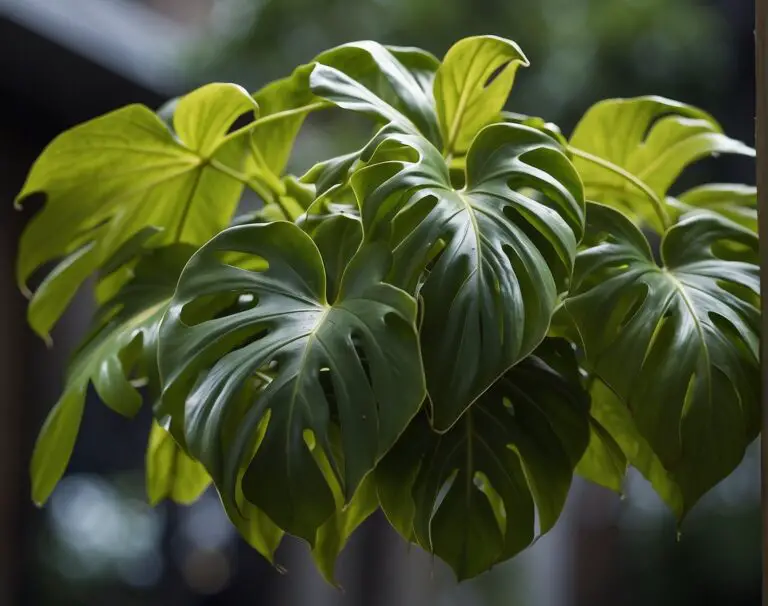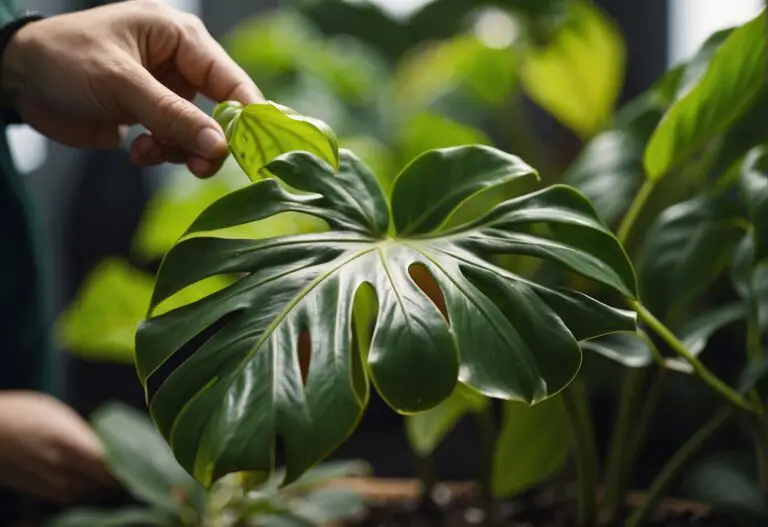How to Rejuvenate Creeping Phlox: Tips and Tricks
Are you tired of looking at your dry and unattractive creeping phlox? Well, we have good news for you – rejuvenating your creeping phlox is easier than you think! Creeping phlox is a popular groundcover that produces colorful blooms in the spring.
However, if left unattended, it can become dry and unattractive. In this article, we will show you how to rejuvenate your creeping phlox and keep it looking healthy and beautiful year after year.

To properly rejuvenate your creeping phlox, it is important to understand the plant’s natural growth cycle. Creeping phlox requires a period of dormancy during the fall and winter months. During this time, the plant is not actively growing and is instead in a state of rest. By following a few simple steps, you can ensure that your creeping phlox is healthy and vibrant year after year.
Key Takeaways
- Rejuvenating your creeping phlox requires a period of dormancy during the fall and winter months.
- To properly rejuvenate your creeping phlox, you need to cut back the plant by a third or half annually after each spring blooming season.
- Watching for pests and dealing with these infestations as soon as they are spotted using an organic insecticidal soap is also important for the plant’s care.
How to Rejuvenate Creeping Phlox
If you’re looking to rejuvenate your creeping phlox, there are a few key things you need to know. In this section, we’ll cover everything you need to know to bring your creeping phlox back to life.
Understanding Creeping Phlox
Creeping phlox is a low-growing, mat-forming perennial that produces a carpet of flowers in the spring.
It’s a hardy plant that can tolerate a wide range of conditions, but it does require some care to keep it looking its best. Creeping phlox prefers well-drained soil and full sun to partial shade.
Best Time to Rejuvenate
The best time to rejuvenate your creeping phlox is in late winter or early spring when the plant is dormant. This gives the plant the best chance of success.
If you wait until later in the year, the plant may not have enough time to recover before the next growing season.
Proper Pruning Techniques
To rejuvenate your creeping phlox, you’ll need to prune it back. Using garden shears, cut back the plant by a third or half. It’s generally safe to eyeball this amount, but if in doubt, you can always measure with a ruler.
Make sure to trim the entire plant so that each stem is trimmed back to this level. Repeat this gardening task annually after each spring blooming season. This will help keep the plant healthy and promote new growth.
Watering and Fertilizing
Creeping phlox requires regular watering, especially during dry spells. Water the plant deeply once a week, making sure to water at the base of the plant.
This will help prevent overhead watering which can lead to powdery mildew and leaf spot. Fertilize the plant once a year in the spring with a balanced fertilizer. This will help keep the plant healthy and promote new growth.
Dealing with Pests and Diseases
Creeping phlox is generally resistant to pests and diseases, but it can be susceptible to powdery mildew, leaf spot, and root rot. To prevent these diseases, make sure to water at the base of the plant, avoid overhead watering, and space plants properly to improve air circulation. If you do notice any signs of disease, remove infected leaves and treat the plant with a fungicide.
In summary, rejuvenating your creeping phlox can be a simple process that will help keep your plant healthy and looking its best. By understanding the best time to rejuvenate, proper pruning techniques, watering and fertilizing, and dealing with pests and diseases, you can keep your creeping phlox thriving for years to come.
How Often Should You Rejuvenate Creeping Phlox?
Rejuvenating creeping phlox is an essential process that should be done every 3-5 years to maintain its health and vigor.
Overcrowding can lead to a decline in plant health, which can affect its ability to flower and spread. Here’s what you need to know about how often to rejuvenate your creeping phlox.
Can Creeping Phlox Be Rejuvenated in Any Season?
The best time to rejuvenate creeping phlox is during the fall or winter months when the plant is in a state of dormancy. During this time, the plant is not actively growing and is instead in a state of rest. This makes it easier to cut back without causing damage, as the plant is not actively taking up nutrients.
If you missed the fall or winter window, you can still rejuvenate the plant in the early spring before it starts to grow again. However, it is important to note that rejuvenating the plant too often can harm it. Make sure to give the plant enough time to fully recover before rejuvenating it again.
Here are some tips to help you determine when to rejuvenate your creeping phlox:
- Rejuvenate your creeping phlox every 3-5 years to maintain its health and vigor.
- Choose the fall or winter months to rejuvenate your plant when it is in a state of dormancy.
- If you missed the fall or winter window, you can still rejuvenate the plant in the early spring before it starts to grow again.
- Rejuvenating the plant too often can harm it, so make sure to give it enough time to fully recover before rejuvenating it again.
By following these tips, you can ensure that your creeping phlox stays healthy and vibrant for years to come.
What Are Some Common Mistakes in Rejuvenating Creeping Phlox?
Rejuvenating creeping phlox is an important process that should be done every 3-5 years to keep the plant healthy and strong. However, there are some common mistakes that gardeners make when rejuvenating their creeping phlox. Here are some mistakes to avoid:
- Cutting the plant back too far: One of the most common mistakes in rejuvenating creeping phlox is cutting the plant back too far. It is important to only cut back about a third of the plant to avoid damaging it.
- Not properly watering the plant after rejuvenation: Another mistake is not properly watering the plant after rejuvenation. Make sure to water the plant deeply and frequently after rejuvenation to help it recover.
- Not properly fertilizing the plant after rejuvenation: Finally, not properly fertilizing the plant after rejuvenation can also be a mistake. Use a balanced fertilizer to help the plant grow back healthy and strong.
To avoid these mistakes, it is important to follow the proper rejuvenation process. After cutting back the plant, make sure to water it deeply and fertilize it with a balanced fertilizer. With these tips in mind, your creeping phlox will be thriving in no time!
Frequently Asked Questions (FAQs)
How long does creeping phlox bloom?
Creeping phlox blooms from late spring to early summer. The plant produces clusters of fragrant, five-petal flowers that can stretch almost an inch across. The blooming time may vary depending on the climate and growing conditions.
What does creeping phlox look like when not in bloom?
When not in bloom, creeping phlox looks like a dense mat of evergreen foliage. The leaves are small and needle-like, and they form a thick carpet that can cover the ground. The foliage is green in color and has a slightly hairy texture.
How to plant creeping phlox on a slope?
Planting creeping phlox on a slope is easy. Start by preparing the soil. Make sure it is well-draining and has good fertility. Dig a hole that is slightly larger than the root ball of the plant. Place the plant in the hole and cover the roots with soil. Water the plant thoroughly and add a layer of mulch around it to retain moisture.
Is creeping phlox evergreen?
Yes, creeping phlox is evergreen. It retains its foliage throughout the year, even in winter. The plant is hardy and can withstand cold temperatures and snow. The foliage is green in color and has a slightly hairy texture.
How do you bring phlox back to life?
If your phlox looks wilted or yellow, it may be suffering from drought stress or poor soil conditions. To bring it back to life, water the plant deeply and add a layer of mulch around it to retain moisture. You can also fertilize the plant with a balanced fertilizer to improve its health.
How do you make creeping phlox bloom again?
To make creeping phlox bloom again, you need to prune it after the first bloom. Cut back the plant by a third or half using garden shears. This will encourage the plant to produce new growth and more flowers. You can also fertilize the plant with a phosphorus-rich fertilizer to promote blooming.
Creeping phlox is a beautiful and low-maintenance plant that can add color and texture to your garden. With the right care and attention, you can enjoy its fragrant blooms and evergreen foliage year after year.
Conclusion
Congratulations! You have successfully rejuvenated your creeping phlox and brought it back to life. Remember, the key to successfully rejuvenating your plant is to wait until late winter or early spring when the plant is in a state of dormancy. This will provide the best chance of success.
Keep in mind that fungal diseases can deplete phlox plants of vital nutrients and water, leading to yellow or chlorotic and dried out phlox plants. Be sure to manage your phlox plants and keep them healthy to prevent this from happening.
If parts of your phlox plant have dried out or died, cut them out near the base of the plant. If the green parts of the plant are looking leggy and not full, you can pinch back the stems by 1/3 their height.
When it comes to shearing your creeping phlox, remember to do it from late May (after bloom) to no later than mid-August. Make sure there are no buds left to open before you begin this process. Using garden shears, cut back the plant by a third or half.
Hand-pulling weeds is the most effective method for removing them from your creeping phlox. If the weeds get out of control, it might be easiest to dig up the phlox (keeping its roots intact), clear the area of grass and weeds, and then replant the phlox.
Remember, creeping phlox grows best in full sun to partial shade, so be sure to plant it in an area that receives plenty of sunlight.
By following these simple steps, you can ensure that your creeping phlox will thrive and add beauty to your garden for years to come. Happy gardening!






